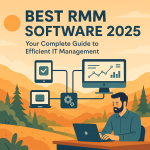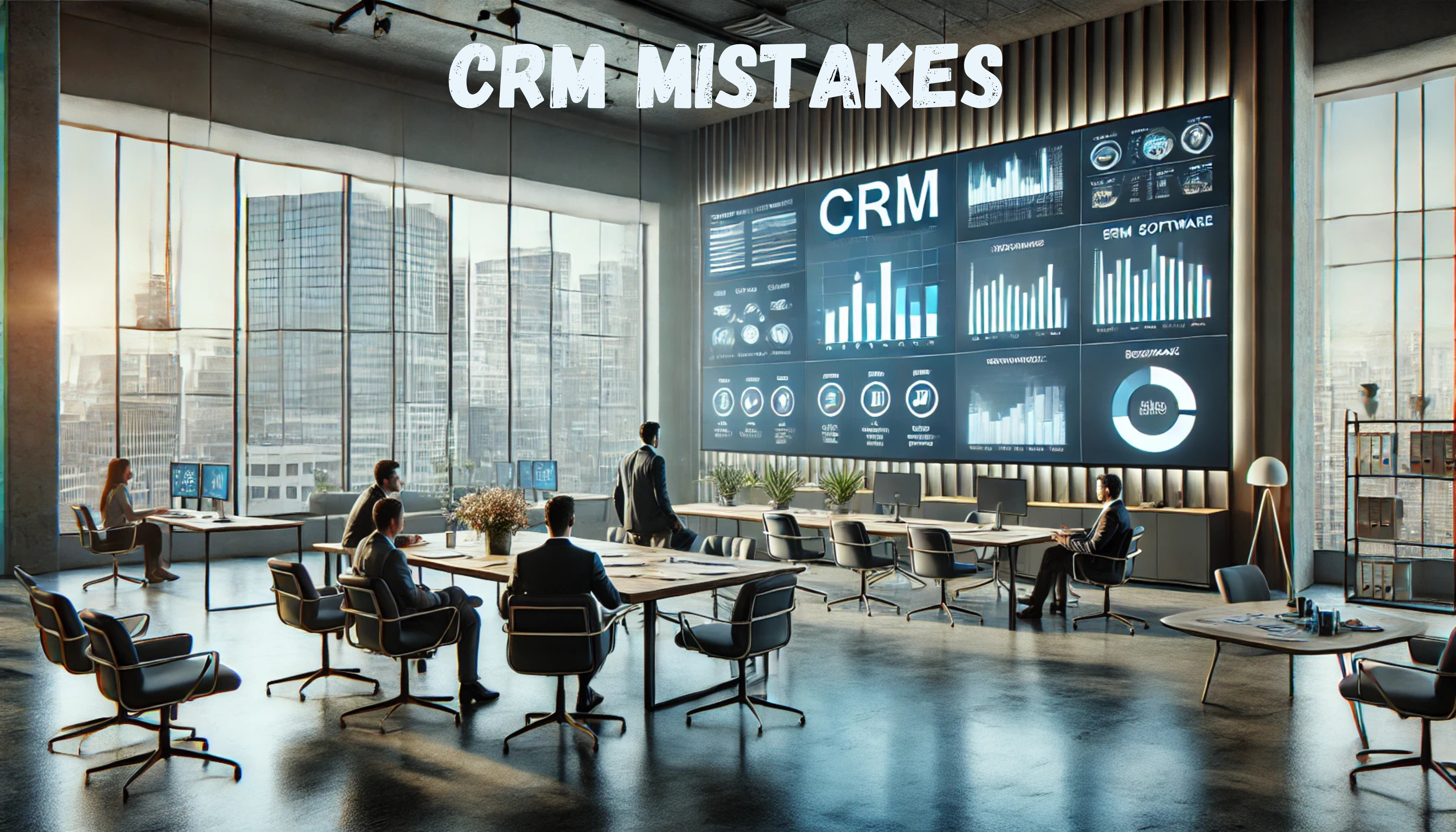Common CRM mistakes Small Businesses Should Avoid
Customer relationship management (CRM) systems are essential tools for small businesses aiming to build stronger connections with their clients and boost sales. When implemented correctly, these systems provide up-to-date, relevant data that can drive smarter business decisions. However, many companies struggle to maximize their CRM’s potential, often due to avoidable errors.
One major challenge is low user adoption. Approximately 70% of CRM implementations fail because employees aren’t adequately trained or supported1. This can lead to underutilization and wasted resources. Additionally, 50% of small businesses choose a CRM that doesn’t align with their needs, further complicating the process1.
On the flip side, businesses that effectively use CRM systems can increase sales by up to 29% and improve customer retention rates by 27%1. The key lies in proper training, clear goal-setting, and regular data audits to ensure the system delivers actionable insights.
In this article, we’ll explore the most frequent pitfalls small businesses face with CRM systems and provide practical solutions to help you avoid them. By addressing these challenges, you can unlock the full potential of your CRM and drive meaningful growth for your company.
Key Takeaways
- CRM systems are vital for improving customer relationships and boosting sales.
- Low user adoption is a leading cause of CRM implementation failure.
- Choosing the right CRM for your business needs is crucial for success.
- Proper training and support can significantly enhance CRM effectiveness.
- Regular data audits ensure cleaner data and better insights.
Understanding CRM and Its Impact on Your Business
Centralizing customer information is a game-changer for businesses aiming to grow. A CRM system helps you organize and manage customer data, making it easier to track leads, analyze sales, and improve relationships. By integrating this tool into your daily operations, you can streamline processes and make better decisions.
Defining CRM and Its Core Functions
At its core, a CRM system is designed to collect and organize customer data. This includes contact details, purchase history, and interaction records. With this information, you can track leads more effectively and analyze sales trends. Centralized data also ensures that all departments have access to the same information, reducing errors and improving collaboration2.
Key features of CRM software include:
- Data Collection: Gather and store customer information in one place.
- Lead Tracking: Monitor potential customers through the sales pipeline.
- Sales Analysis: Identify trends and opportunities for growth.
How CRM Enhances Customer Relationships and Sales
Integrating a CRM system into your business processes can significantly improve customer relationships. By having accurate and centralized information, you can personalize interactions and address customer needs more effectively. This leads to higher satisfaction and loyalty3.
Additionally, CRM software can boost sales by providing insights into customer behavior. For example, businesses that use CRM are 86% more likely to exceed their sales goals3. The system also shortens the sales cycle by 8 to 14 days, allowing you to close deals faster3.
| Benefit | Impact |
|---|---|
| Centralized Data | Improves inter-departmental collaboration and reduces errors. |
| Lead Tracking | Helps identify and nurture potential customers. |
| Sales Analysis | Provides actionable insights for growth. |
By leveraging the power of CRM, you can enhance customer experience and drive operational efficiency. Regular training and data audits ensure that your system remains effective and up-to-date2.
Common CRM mistakes and Their Solutions
Implementing a CRM system can transform how your business manages customer interactions, but only if you avoid critical errors. Many small businesses face challenges that hinder the effectiveness of their CRM tools. Two of the most frequent issues are low user adoption and poor data management.
User Adoption Challenges and Simple Fixes
Low user adoption is a major hurdle for many companies. Studies show that 70% of CRM implementations fail due to user resistance and lack of proper training4. To address this, involve your team early in the selection and testing phases. This ensures the system aligns with their needs and workflows.
Gamification can also boost engagement. For example, setting daily activity goals, like a specific number of calls or emails, encourages consistent use5. Regular training sessions are equally important. Companies that invest in user training see a 40% increase in adoption rates4.
Managing Data Effectively to Avoid Duplicates and Inaccuracies
Poor data management can lead to duplicate entries and inaccuracies, which skew insights and forecasts. Approximately 60% of businesses lose leads due to improper CRM setup and data management4. To prevent this, establish clear data entry guidelines and conduct regular audits.
During CRM migration, clean your existing data to remove duplicates and outdated information. This ensures a smooth transition and accurate forecasting. Additionally, avoid requiring too many fields in forms, as 30% of sales reps skip data entry when forms are overly complex5.
| Issue | Solution |
|---|---|
| Low User Adoption | Involve users early, use gamification, and provide ongoing training. |
| Duplicate Data | Establish clear guidelines, conduct audits, and clean data during migration. |
| Inaccurate Forecasting | Simplify forms and ensure consistent data entry practices. |
By addressing these challenges, you can maximize the potential of your CRM system. Proper training, user involvement, and data management are key to driving better customer relationships and sales performance.
Optimizing CRM Usage for Better Team Performance
Boosting team performance with a CRM system requires strategic planning and modern tools. By focusing on continuous training and innovative features, you can enhance productivity and customer engagement. This section explores actionable steps to optimize your CRM usage for better results.
Implementing Ongoing Training and Gamification Strategies
Regular training sessions are essential for improving user adoption and confidence. Studies show that businesses investing in proper training see a 40% increase in adoption rates6. Tailor these sessions to different roles within your team to ensure everyone understands the system’s value.
Gamification can make CRM usage more engaging. For example, setting daily goals like a specific number of calls or emails encourages consistent use. Offering incentives like gift cards can further motivate your team7.
Integrating Mobile and Social Media Tools for Enhanced Engagement
Mobile integration allows your team to access customer data on the go, ensuring timely updates and real-time engagement. This is particularly useful for sales reps who are often out of the office6.
Social media integration helps track customer interactions and identify trends. By connecting your CRM with platforms like Facebook and LinkedIn, you can streamline workflows and improve data quality7.
| Strategy | Benefit |
|---|---|
| Ongoing Training | Improves user adoption and confidence. |
| Gamification | Encourages consistent use and boosts engagement. |
| Mobile Integration | Ensures timely data entry and real-time engagement. |
| Social Media Integration | Streamlines workflows and improves data quality. |
By implementing these strategies, you can optimize your CRM system for better team performance. Regular training, gamification, and modern tools ensure your team stays engaged and productive.
Selecting the Right CRM Software for Your Business Needs
Choosing the right CRM software is a critical decision that can shape your business’s growth and customer relationships. With so many options available, it’s essential to focus on your core needs and long-term goals. This ensures the solution you pick aligns with your business processes and helps your team succeed.
Scalability and Integration Considerations
Scalability is a key factor when selecting a CRM system. Your business will grow, and your software should grow with it. Over 60% of organizations emphasize the importance of identifying needs and priorities during the evaluation process8.
Integration capabilities are equally important. Your CRM should seamlessly connect with other tools like email, marketing platforms, and accounting software. Businesses that effectively integrate AI capabilities into their CRM see a 30% increase in customer engagement8.
- Assess Future Needs: Ensure the software can handle increased data and users as your business expands.
- Check Compatibility: Verify that the CRM integrates with your existing tools to streamline workflows.
- Plan for Growth: Choose a solution that supports both current and future business goals.
Evaluating Vendor Expertise and Industry-Specific Features
Vendor expertise plays a crucial role in the success of your CRM implementation. Over 60% of organizations use an evaluation matrix to weigh vendor criteria effectively8. Look for vendors with a proven track record in your industry.
Industry-specific features can make a significant difference. For example, a CRM designed for retail may include inventory management, while one for healthcare might focus on patient scheduling. Nearly 50% of organizations underestimate the training needs associated with new CRM software, so ensure your vendor offers robust support8.
| Criteria | Importance |
|---|---|
| Vendor Reputation | Ensure reliability and expertise in your industry. |
| Training and Support | Look for comprehensive onboarding and ongoing assistance. |
| Customization Options | Choose a system that can adapt to your unique needs. |
By focusing on scalability, integration, and vendor expertise, you can select a CRM system that drives growth and enhances customer relationships. Make an informed decision today to set your business up for long-term success.
Conclusion
To truly unlock the potential of your business, focusing on effective customer relationship strategies is essential. Avoiding errors like low user adoption and poor data management can significantly enhance your system’s performance. By implementing the right solutions, you can streamline workflows and improve decision-making9.
Investing in ongoing training ensures your team stays engaged and productive. Companies that prioritize user training see a 40% increase in adoption rates10. This leads to better customer experiences and stronger relationships, which are crucial for long-term success.
Choosing the right software tailored to your needs is equally important. Scalability and integration features ensure your system grows with your company. Businesses that align their CRM with their goals see a 29% increase in sales10.
Take action today to optimize your system. By applying these strategies, you can drive growth, improve client interactions, and achieve your business objectives.
FAQ
What is customer relationship management, and why is it important for small businesses?
Customer relationship management (CRM) is a system designed to manage interactions with current and potential clients. It helps streamline processes, improve customer relationships, and boost sales. For small businesses, it’s a vital tool to stay organized and competitive.
How can CRM software improve sales and customer engagement?
CRM software centralizes customer data, making it easier to track interactions, identify opportunities, and personalize communication. This leads to stronger relationships, higher customer satisfaction, and increased sales efficiency.
What are some challenges businesses face when adopting CRM systems?
Common challenges include resistance from users, lack of proper training, and difficulties in data management. To overcome these, focus on clear communication, ongoing training, and setting measurable goals for your team.
How can I avoid data duplication and inaccuracies in my CRM system?
Regularly clean and update your database. Use automation tools to reduce manual entry errors and establish clear data entry guidelines for your team. Consistent audits will also help maintain accuracy.
What strategies can improve team performance with CRM tools?
Implement ongoing training programs and gamification to keep your team engaged. Encourage the use of mobile and social media integrations to ensure seamless communication and accessibility.
What should I consider when choosing CRM software for my business?
Look for software that scales with your business and integrates well with your existing tools. Evaluate vendors based on their expertise and whether they offer features tailored to your industry.
Source Links
- The CRM Mistakes Small Businesses Should Avoid – Lucro CRM – https://lucrocrm.com/common-crm-mistakes/
- 10 common CRM problems and how to fix them – https://www.zendesk.com/blog/10-common-crm-problems-fix/
- 13 Common CRM Mistakes Small Businesses Must Avoid – https://smallbusinesshq.co/crm-mistakes/
- 6 CRM Implementation Mistakes and How to Avoid Them – https://www.close.com/blog/crm-implementation-mistakes
- 10 Common CRM Mistakes and How to Avoid Them – https://dcnation.dealercenter.com/blog/10-common-crm-mistakes-and-how-to-avoid-them
- Overcome Your CRM Challenges: Strategies for Success – https://solutionsmetrix.com/article/avoid-common-mistakes-to-maximize-your-crm-potential/
- What are the most common CRM mistakes to avoid? – https://www.linkedin.com/advice/0/what-most-common-crm-mistakes-avoid-skills-client-relations
- How to choose the right CRM software for your organization | TechTarget – https://www.techtarget.com/searchcustomerexperience/tip/How-to-choose-the-right-CRM-software-for-your-organization
- The Top 4 Common CRM Mistakes – https://www.nocrm.io/blog/top-4-common-crm-mistakes/
- 7 Common CRM Challenges and How To Fix Them – https://www.badgermapping.com/blog/crm-challenges/











